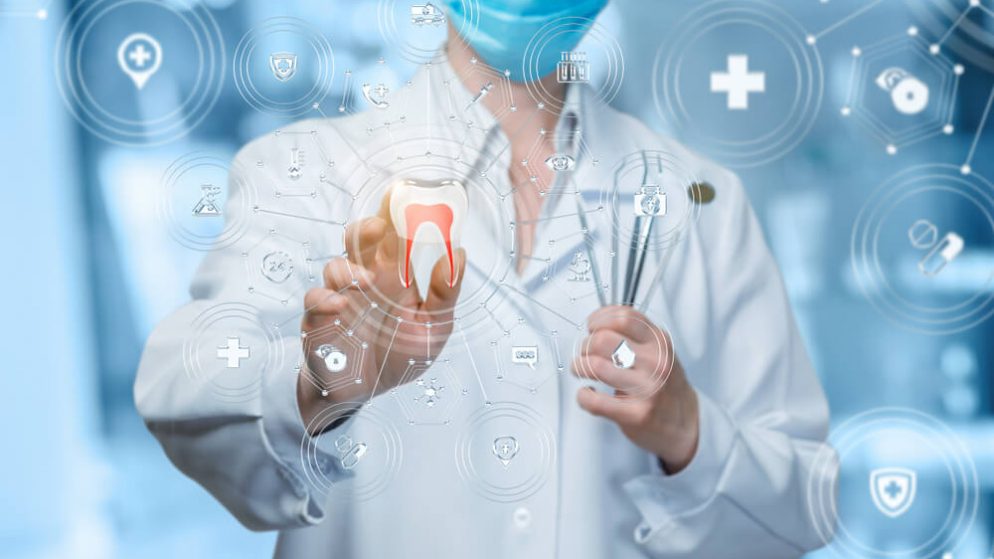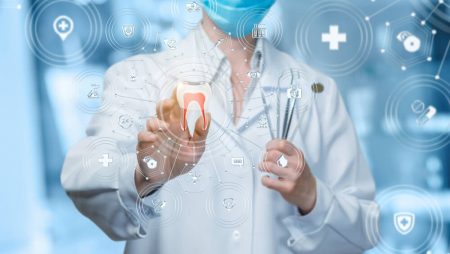



Get new exclusive access to healthcare business reports & breaking news




Oral healthcare has come a long way in recent years with the introduction of innovative techniques and technologies. These innovations have revolutionized how dental problems are diagnosed, prevented, and treated, making dental care accessible, efficient, and comfortable for patients. From 3D printing to digital X-rays, these technological advancements have made dental procedures more precise, making it more straightforward for patients to maintain healthy teeth and gums.
Dental practices like The Smilist are at the forefront of these innovations. They’re fully equipped with the latest technologies and equipment to provide efficient oral healthcare to their patients. With the help of a team of highly skilled dental professionals, they offer personalized care that is unique to every patient.
This article will discuss 11 recent innovations in oral healthcare and how they are changing the dental industry.
Digital X-Rays
Digital X-rays have changed the way dentists take and analyze X-ray images. Unlike traditional X-rays, digital ones use electronic sensors instead of X-ray films to capture images of the teeth and jaw. This innovation reduces exposure to radiation and produces better photos that a dentist can analyze instantly. Dentists can quickly diagnose dental problems and provide treatment without waiting for X-ray films to develop.
There’s no need to dispose of hazardous chemicals used in developing films, making digital X-rays environmentally friendly compared to traditional X-rays. The transfer of digital images is also more straightforward, making it easier for a dentist to share photos with other healthcare professionals when necessary.
3D Printing
Dentists can use 3D printing technology to make custom dental implants and devices. This technology makes the production of dental prosthetics faster and more precise.
Complex dental procedures like full mouth reconstruction are made more accessible by using 3D technology; traditional methods are labor-intensive and time-consuming. With this 3D printing technology, dental laboratories can create customized and precise dental restorations that reduce the treatment time and drastically improve treatment results.
Smart Toothbrushes
These toothbrushes use wireless connectivity and sensors to remind the users to brush regularly, provide feedback, and track brushing habits. Some smart toothbrushes can connect to a smartphone app. The app provides personalized recommendations on how to improve your oral health.
Smart toothbrushes also notify the user when it is time to change the brush head. Ones designed for children even come with fun games and timers that encourage children to brush their teeth.
Tele-Dentistry
Tele-dentistry allows patients to connect remotely with dentists through digital communication or video conferencing. This technology helps patients in rural areas access quick, convenient, and affordable dental advice. It can also be helpful for routine check-ups and follow-up appointments, as it eliminates the need to travel to the dentist’s office.
Tele-dentistry is especially useful for people with transportation and mobility issues and those too busy to take time off work.
Laser Dentistry
This technology uses a laser beam to whiten teeth, treat gum disease, and remove tooth decay. It’s more precise and less invasive than traditional tools. Laser dentistry significantly reduces the risk of infection because the laser beam sterilizes the area it touches.
The use of laser dentistry minimizes recovery time and pain. It’s also helpful to patients sensitive to traditional tools and those with anxiety.
Intraoral Cameras
Intraoral cameras are small, easy-to-handle cameras that take high-resolution images of gums and teeth. The camera size makes it easy to maneuver inside the mouth, displaying the pictures it takes on a computer screen.
Oral health professionals can use these cameras to diagnose conditions like cavities, tooth decay, cancer, and gum disease. A dentist can use the images to educate the patient on oral health. When patients see the condition of their teeth and gums up close, they can make more informed decisions regarding their oral hygiene.
Dental Implants
Dental implants are an effective way to replace missing teeth. The dentist attaches the implant surgically. The implant fuses with the bone and provides a strong foundation for a dental crown or bridge. Unlike traditional restorations, dental implants preserve the integrity of the surrounding teeth. They also have more durability and stability. When properly maintained, dental implants can last a lifetime.
Air Abrasion
Air abrasion is an alternative to traditional drilling for removing decay and preparing a tooth for filing. It involves a small device that blasts a fine stream of particles at the tooth surface and removes discoloration.
Air abrasion preserves the tooth structure and eliminates the need for anesthesia. This technique is also quieter and more comfortable for patients because it produces less vibration and heat than drilling.
CEREC Technology
Chairside Economical Restoration of Esthetic Ceramics (CEREC) technology allows dentists to create custom-made dental restorations. A dentist makes a 3D model for the repair from a digital scan of the patient’s teeth. The restoration is milled from a ceramic block using a computer-operated machine. This process occurs in-house, ensuring the patients get their repairs within one visit. Restorations made with CEREC technology are precise, reducing the risk of complications.
Salivary Diagnostics
Salivary diagnostics involves analyzing a patient’s saliva to detect early signs of disease. Saliva has a lot of information on a patient’s oral health, including viruses and bacteria. These and other markers can indicate the presence of illness. It can also help detect periodontitis, oral cancer, or even diabetes.
The information obtained from salivary diagnostics allows for early treatment and intervention. This technique can help reduce the need for invasive procedures and improve diagnosing accuracy.
Salivary diagnostics is still in the early development stages. However, it shows great promise for improving oral healthcare in the future.
Virtual Reality
Virtual reality effectively distracts patients with dental anxiety. It creates calming environments that delight patients and reduces stress levels, leading to a positive patient experience and improved outcomes. Virtual reality can also educate patients about the treatment options available to them. The technology is still in its early stages in dentistry but has already shown excellent results.
Final Thoughts
Oral healthcare is constantly evolving with innovative solutions that are improving dental care. These technologies, from laser dentistry to salivary diagnostics, make dental care more comfortable and accessible for all patients.
These innovations minimize the recovery time, improving patient outcomes and reducing discomfort. With continued research, more innovative solutions to oral healthcare will emerge, resulting in improved output and reduced dental care costs.